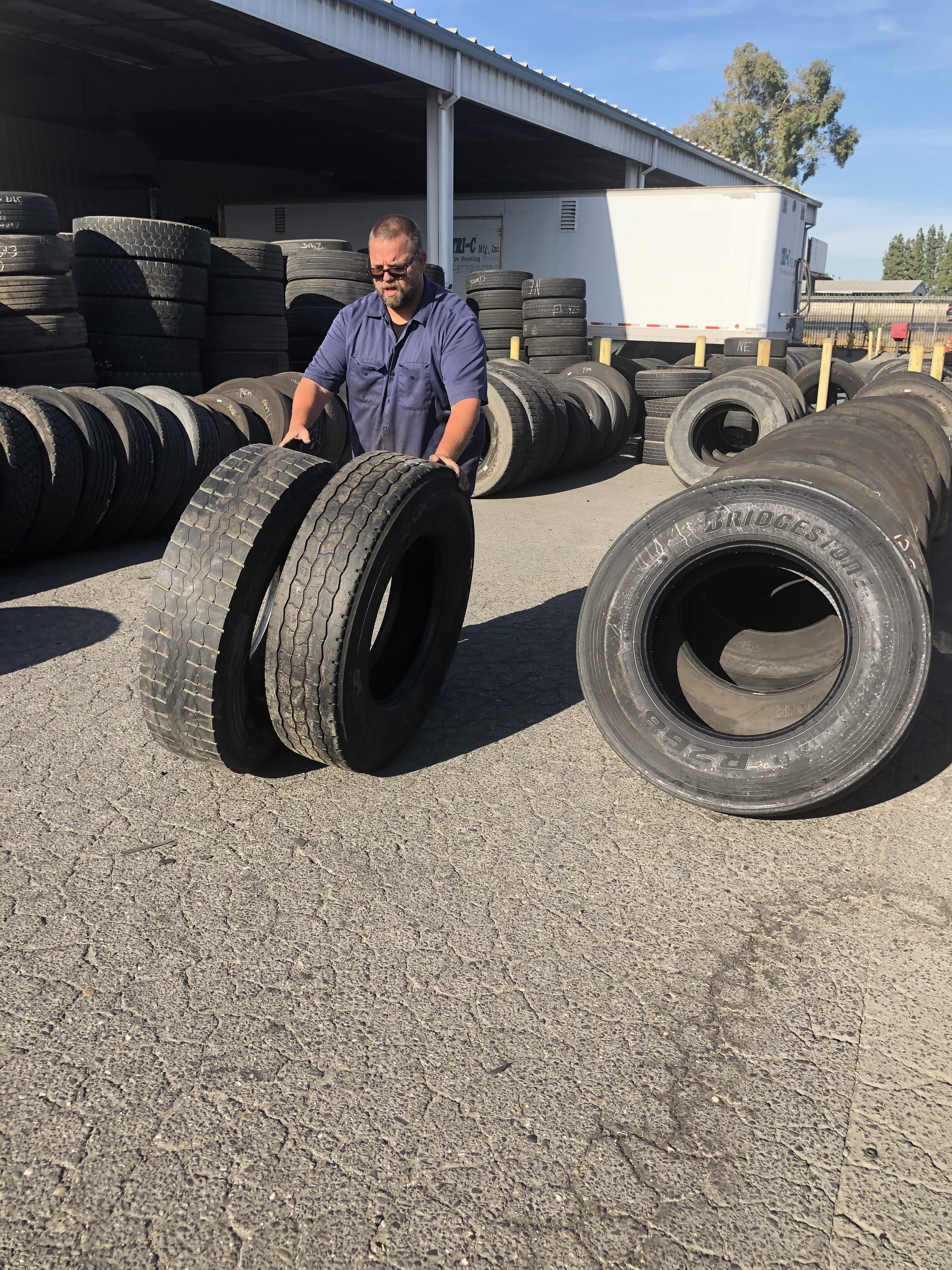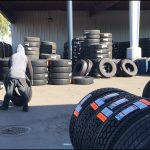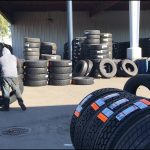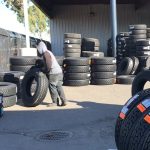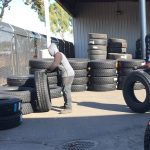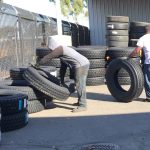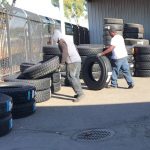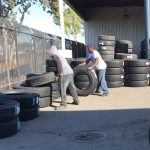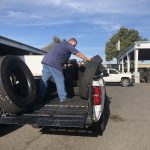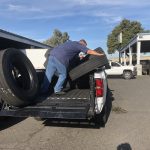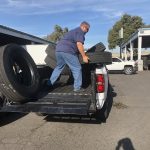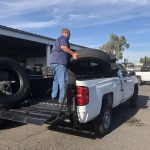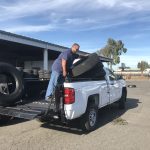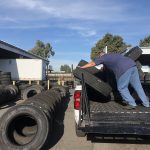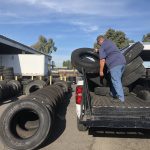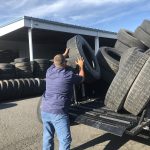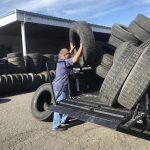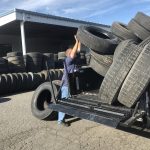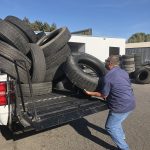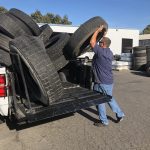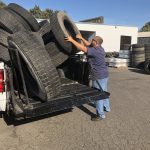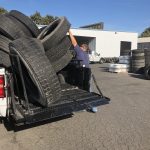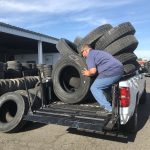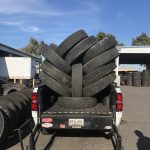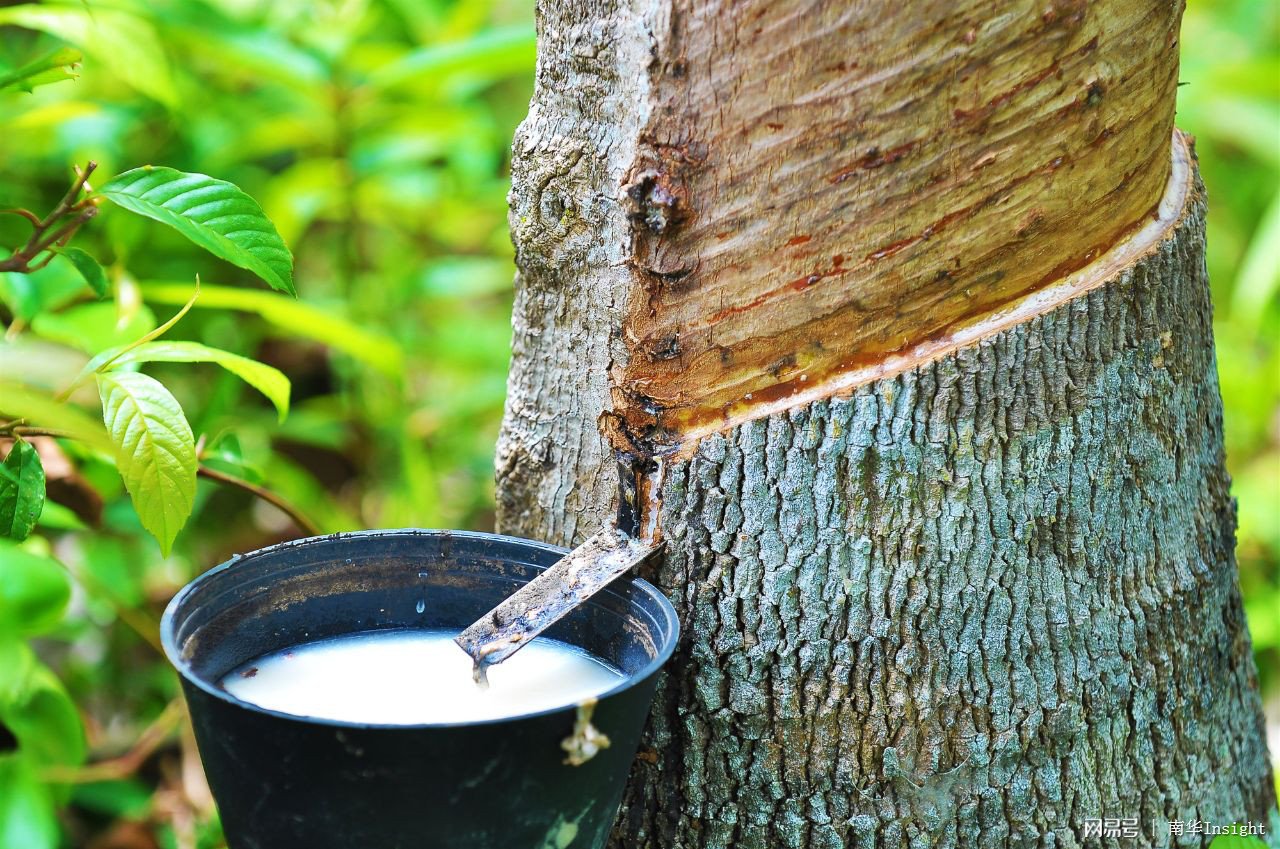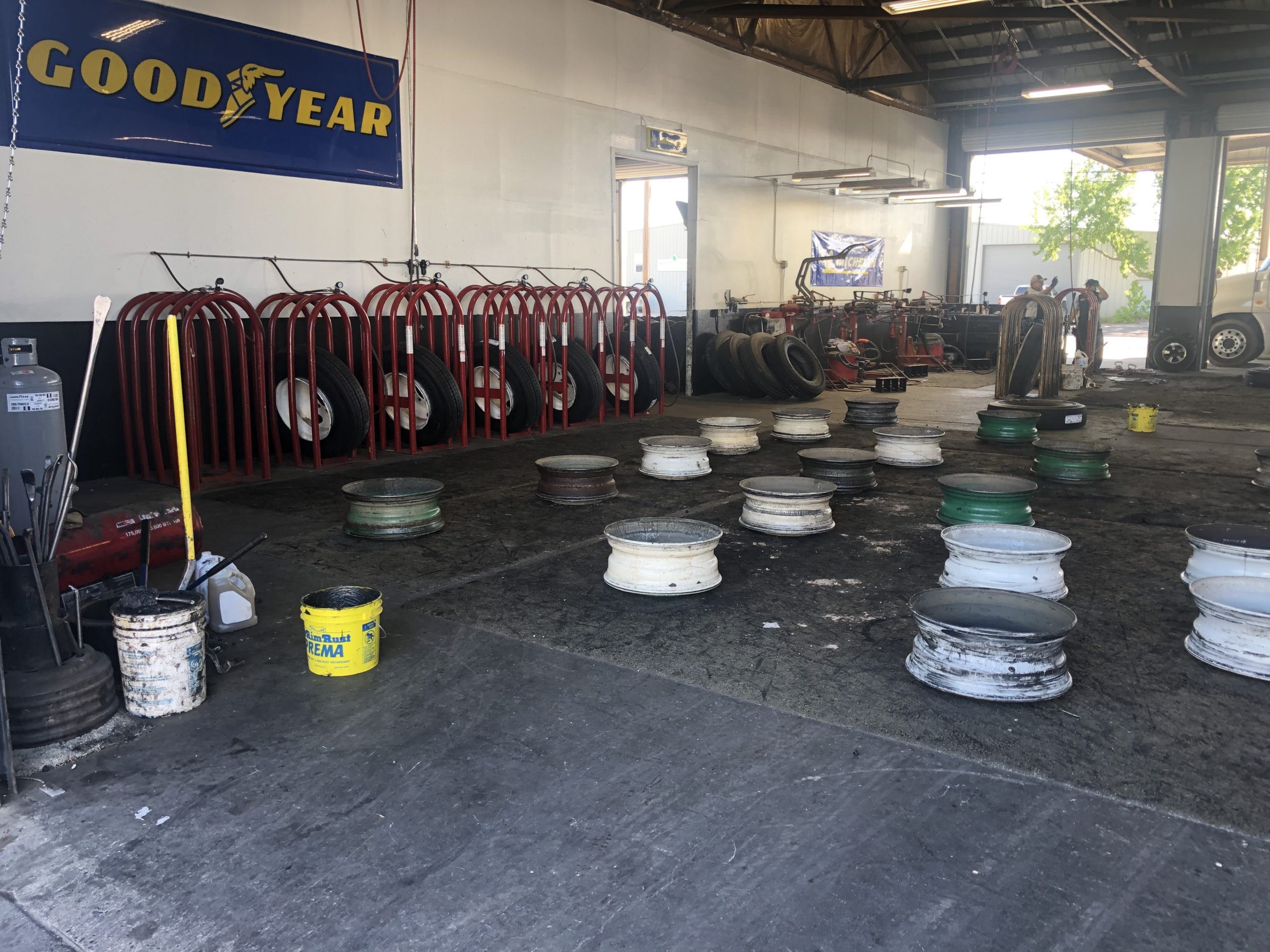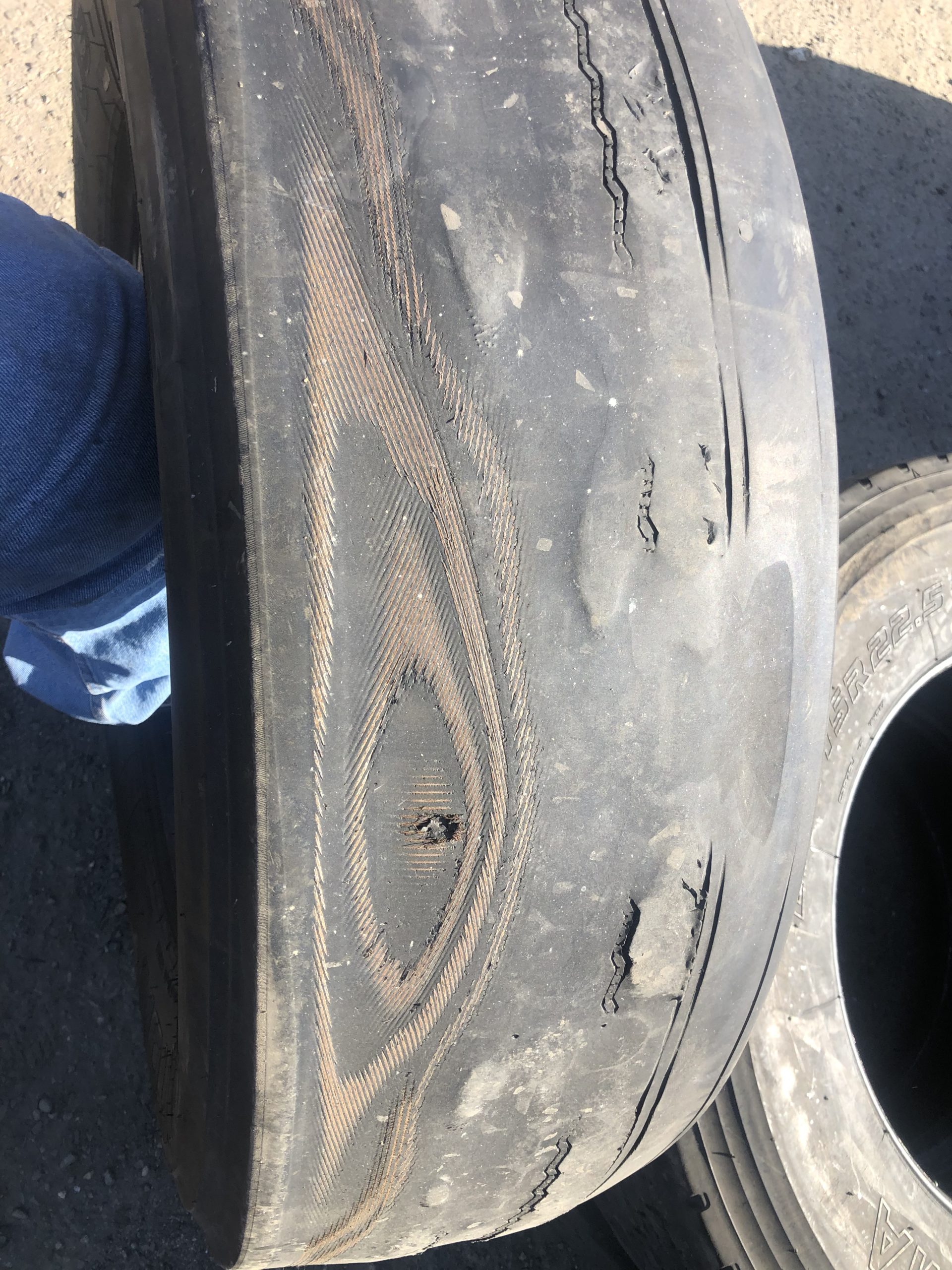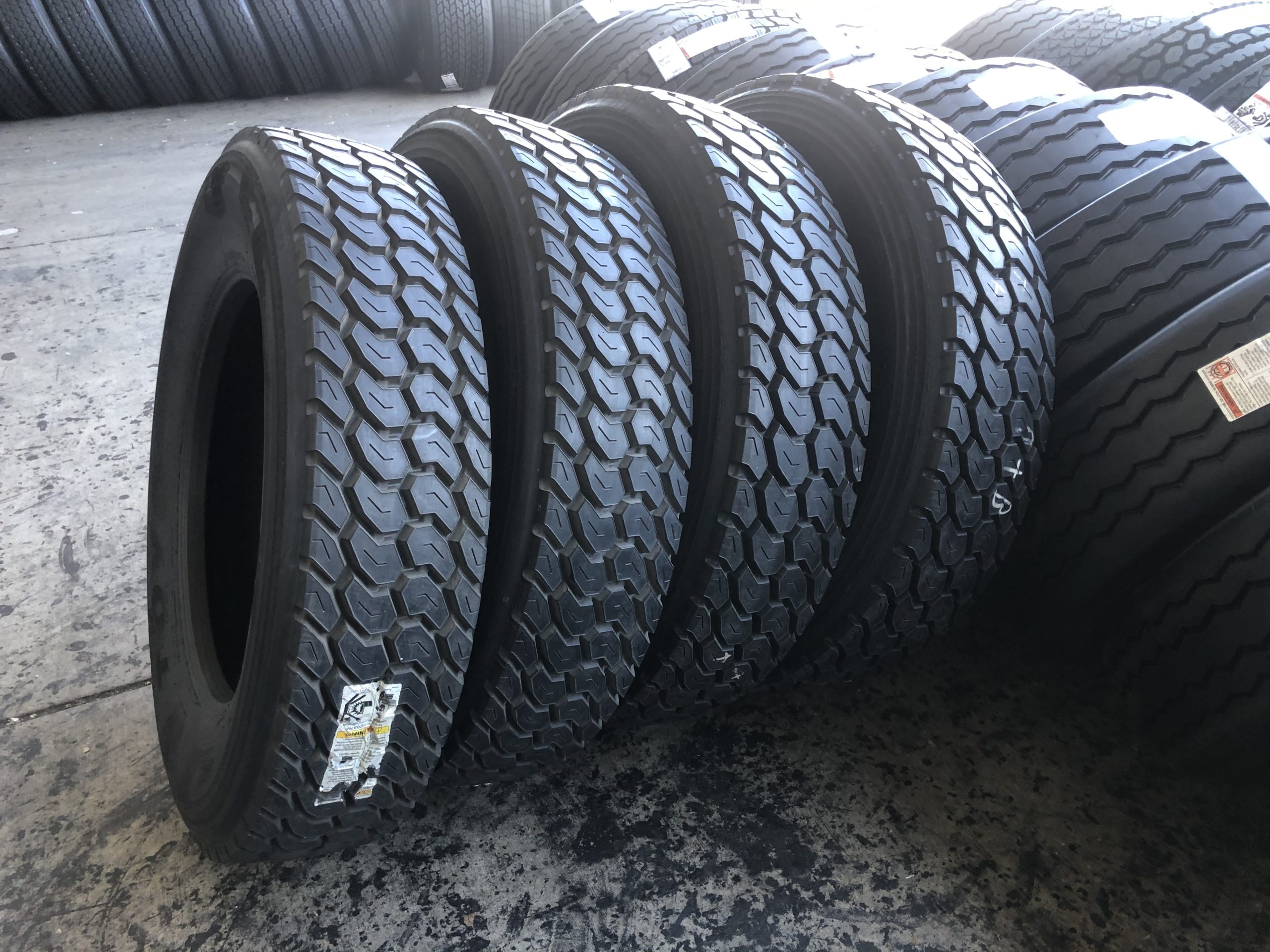Around a tire retreading commercial tire dealership there’s plenty of work being done. We keep thousands of tires moving around and going to their correct places. We load retread shops, warehouses, trucks, trailers, bins, and pickup trucks with the 100lb. donuts every day. When we’ve got to go vertical, and improve the carrying capacity of our floor space, we use teamwork, tractors, and technique to avoid sore backs.
Medium truck tires stacked 8 high tower 2 feet over the height of the average man. To create these stacks, we use a machine called a “stack squeeze”. The stack squeeze converts energy stored in Natural Gas to hydraulic pressure. The hydraulic pressure created by the tractor’s engine and transmission moves pistons that in turn actuate large rubber-coated steel paddles. The Stack Squeeze easily handles huge, 2000lb. off-road tires. It also can place 400 lbs. of medium truck tires on another 400 lbs. of medium truck tires, to create a stack of 8. The stack squeeze does a lot of lifting for our operation, but it’s not always available when tires must be raised up to conserve limited space. The Stack Squeeze
Leverage makes going vertical with truck tires less straining on the lower back. Leverage helps so much it deceives people that see a pickup laden with truck tires and think that the driver/loader is a He-man. Really the driver or loader simply uses leverage to get the tires into place. In a yard, warehouse or truck box, the “stair stacker method” employs leverage to stack tires with very little lifting. In the “stair stacker method”, a technician uses the ratio of the width of two medium truck tires, to the height of one medium truck tire. The width of two tires equals one half of a tire’s height. Therefore, the two-tire stack makes an excellent fulcrum for a tire. The technician simply pushes on the top of a tire that is right next to a stack of two tires. By “lifting” the tire this way, the technician does not lift with his body. He simply pushes down on the top-half of the tire. Once the third tire is on top of the other two, he adjusts as necessary. The adjusting to place the tire correctly requires only a small fraction of the handling force required to dead-lift a tire into place. The true stair stacker method uses this 2-tire-width-as-a-fulcrum process to build up to a stack 8 high. One simply keeps starting stacks right next to the highest yet incomplete stack so that one can use the growing stack as a fulcrum. Once a technician using the stair stacker method has a stack of three tires, he lays another on the ground right next to the stack of three. This fourth tire that the technician stacks begins the second stack. The fifth tire he rolls up onto the fourth, placing the bottom sidewall right up against the first stack, and then uses the two-tire width height difference between the first stack (of three tires) and second stack (of only one, aka the fourth tire) as fulcrum to help place this fifth tire as the fourth tire on the first stack. The sixth tire becomes the 2nd tire on the 2nd stack. The seventh tire stacked will become the fifth tire on the first stack and will be double-fulcrumed: from ground to the top of the second stack, and from the top of the second stack to the top of the first. The process is repeated until the allotted area is full. When loading a 26’ truck-back full of casings, the stair stacker method can save the driver’s back hundreds of pounds of lifting.
- The hooded tech jockeys the tire into place
- he has to get it real close
- nice and tight
- he pushes on the topside
- the inertia carries the tire up
- straightens it out
Leverage is one of those facts of nature that if it’s not with you, it’s against you. Although some of the techniques described here may seem counter-intuitive or unlearnable, they certainly are not and will save your health if you have a lot of work to do as we do here at McCoy’s!
- Push down with the right hand
- uses the bedside as the fulcrum
- some lifting must be done
- but its above the knee and close to the body
- the loaded tires are the next fulcrum
- showing off one hand only
- use the bedside as the fulcrum
- one hand lifts this 100lb tire!
- use the bedside to push the tire up
- use the loaded tires as fulcrum
- use the bedside to keep the lifting in close
- use the tires as a fulcrum
- tire falls into place
- push the tire up the bedside
- use the tires as a fulcrum
- looks like more work than it is
Thanks for reading!


